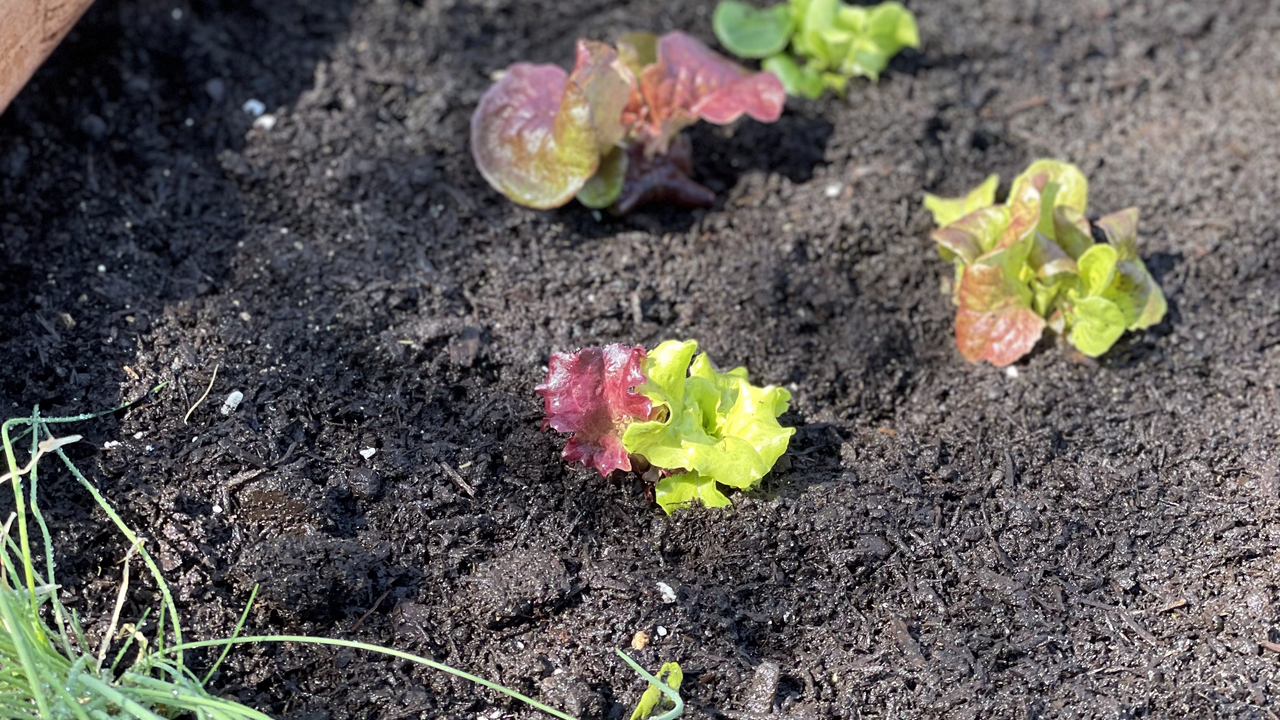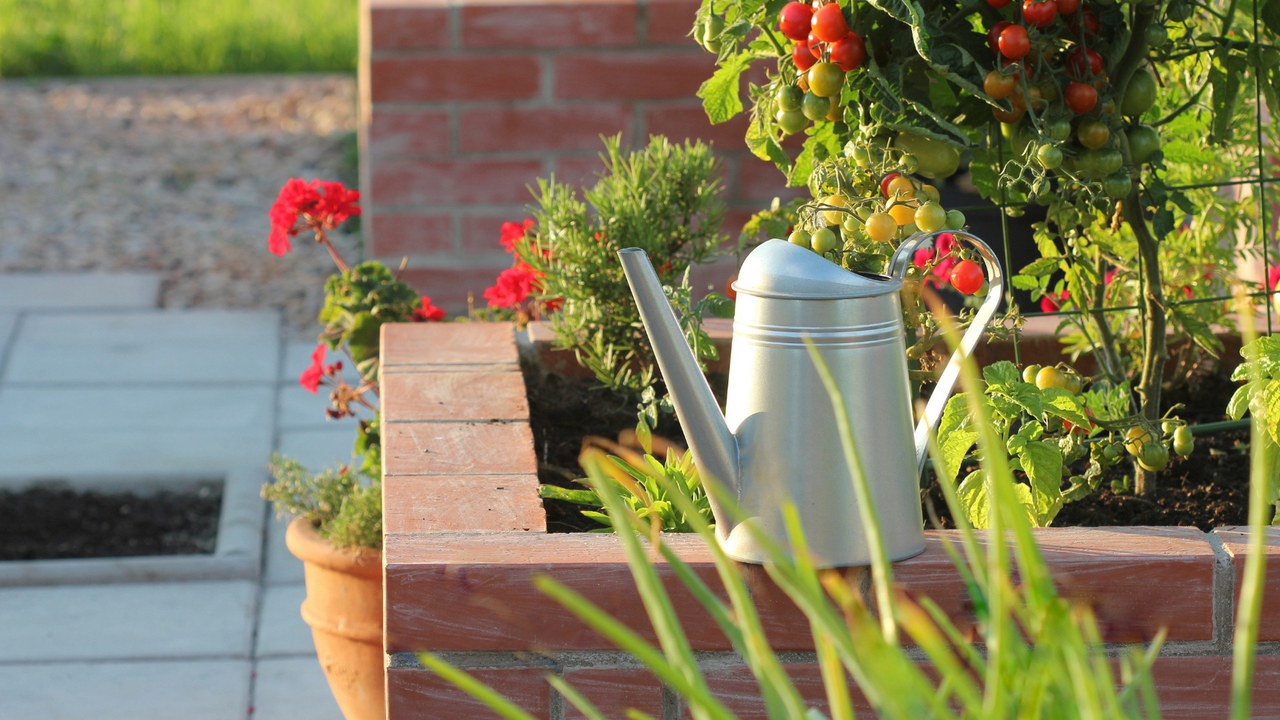7 Food Scraps to Regrow and Repurpose

The cool season is not far off and that means fall gardens are in! We all love free plants and this summer you may have had to purchase some cool season plants to supplement your garden so today I want to talk about how you can take the scraps of 7 common cool season plants and regrow them! I will walk you through how to regrow green onions, romaine lettuce, celery, carrot tops, bulb fennel, leeks, and herbs.
What you'll need:
- A container (glass preferable), this could be a cup or a dish
- Fresh water
- A sunny window is preferred but a bright indirect light will also work
- Food scraps!
You may have already dabbled in the art of regrowing food scraps; green onions are an easy and common way to start.
1. Green Onion
I am starting with green onions these are by far the easiest plants to regrow from grocery store scraps or from your own garden scraps. When you buy them at the store you get the whole plant but often only use the greens cutting back till only an inch is l...
Blossom End Rot Prevention

Planting, caring, pruning, and watering, growing your own vegetables takes time and effort but it is so worth it to harvest fresh and local produce. That is unless your beautiful vegetables fall prey to destruction like Blossom End Rot. The rot eats the fruit from the bottom up greatly reducing their quality and their palatability. What may be even more concerning than watching your beautiful tomato or pepper rot is knowing that blossom end rot affects the whole plant. It is not a disease or caused by a pest, Blossom End Rot is caused by a lack of calcium in the soil. If one fruit shows signs it is not uncommon for multiple more fruits on the same plant or in the same bed to also develop rot.
The Cause
Blossom End Rot is found in tomatoes, squash, cucumbers, melons, and peppers and is caused by a calcium deficiency in the soil. Plants need calcium just like people, they need it for cell structure and to fight pathogens with out calcium the cells can break down and rot. There are two ...
5 Ways to Save Your Garden From the Heat

1. Water, Water, Water!
The most important part of garden maintenance in the summer is watering, the right amount and the right timing. When you water make sure you are watering deeply so that you do not under or over water your plants. If you wait till the soil is mostly dry for the first inch or two then water it for long enough that the water reaches deep into the soil, you will increase your plants drought resistance. Plants roots seek out water and nutrients so if the water is found near the surface of the soil, because the gardener isn't watering for long enough, than the roots will stay shallow and close to the surface. If instead there is plenty of water deep in the soil because the gardener routinely waters for a long period of time the roots will grow deep to access the water. As the gardener you can start by watering two times a week in the late spring but as the temperatures rise you may need to increase to four times a week to keep the soil damp. If you continue to water ...
Best Father's Day Recipes: Eating with the Seasons!

Happy Father's Day!
Going into the weekend I wanted to share some of my favorite cookout recipes with you all! These are recipes we not only love but are also based around seasonal produce so that you can make them using ingredients right from your garden! There is nothing more satisfying than homegrown homemade meals and trust me these recipes are tried and true, easy to follow, by wonderfully talented cooks and bakers!
Click on the images below to be sent right to the recipes!
What is the Arc of the Seasons?

The Arc of the Seasons in the secret to gardening success and making the most of your home garden. Vegetable and fruit crops are sensitive to temperature and changes in temperature so as a gardener you must be aware of how the seasons change. Unless you live at the equator or the arctic everyone has an arc to their year it starts at the coolest point and then gradually increases in temperature to the warmest point in the year. We don’t like to use months because depending on where you are December could be one of your coldest or warmest months and the seasons like spring, summer, fall, and winter are too general. Instead, we divide the seasons into cold, cool, warm, and hot. You can see on the diagram below how the seasons recur over and over in a repeating arc, hence the name Arc of the Seasons!

You can also see in the above diagram how we divide the seasons using temperature to distinguish between them. It is vital to know the difference between the cold season, cool season, warm...
Harvesting in the Cool Season
If you have been planting with the seasons than you have been working hard the past weeks to tend your cool weather plants. I want to make sure you do not let all that hard work and your beautiful fresh produce go to waste. Remember if you plant with the seasons, you also harvest with the seasons! In Kentucky, where Edible Gardens Inc. is headquartered, the cool season is coming to a rapid end as a warm front has moved in, and the hot season will soon be upon us! So, as you go into your gardens be checking your lettuce, radishes and herbs for what we call bolting and harvest what you have following the instructions in the video above!
Is Eating Local Really Important?

The simple answer to this question is absolutely, eating locally produced food is healthier for you, your family, and the environment. When you think of eating locally you probably think growing in your back yard or a farmers’ market and you’re not wrong those are my favorite ways to stay local! Going to a farmers’ market and discussing the variety of squash with the grower themselves and asking how they manage their farm is healthy, informative, and social. That being said, there is more to eating local than just farmers markets and home gardens.
Before you go any further, I want to define what I mean by eating local food because you may not know but there is no universally accepted definition for “local” produce. Local is defined by the Food, Conservation and Energy Act of 2008 as 400 miles away or within your state. That definition isn’t good enough for me, I would like to add that local also means responsibly produced. For a grower to truly be local in my book they must be withi...
Composting: Your Complete Guide in Three Steps

Taking the Ew Out of Compost
One of my favorite things to do is to walk out into my garden and pick and eat. It is one of the most rewarding feelings of instant gratification to pick a cucumber off the vine and pull a few radishes up then take them to my kitchen and cut them up for a snack for my family. But then I’m left with radish tops and the ends of a cucumber, instead of throwing those away and adding to the garbage pile I get to take those back to my garden and add them to my compost pile where they will break down and give new life. Composting is a wonderful thing and if you’ve been around with us for a bit then you know we love our soil! Healthy soil supports abundant plant growth, it reduces pests, diseases, and weeds. It is the base of a good garden, and compositing is a fantastic way to take care of your soil and reduce your waste production. By composting, you can grow a more sustainable garden and participate in one of nature's most powerful processes, decomposition. We ...
10 Biggest Mistakes People Make When Starting Their Gardens in the Spring

Here are the ten common mistakes we want to help you avoid this spring so that you can start your garden off right this year, and you'll see the benefits all season long!
Number 1: Forgetting to tend to your soil
You must take care of your garden's base before you can even think about growing plants. That's why getting a soil test, making amendments, and adding fertilizer is so important! If the plants don’t have good soil to grow in you’ll be disappointed and can get frustrated by the lack of growth and progress. Before planting we like to add a plant or animal-based fertilizer like Fertrell brand - or anything organic. It’s a great granular fertilizer that allows the plant to take up the nutrients when it needs them! Whatever fertilizer you choose, it is important that it contains nutrients like nitrogen, phosphorus, and potassium. When adding your fertilizer make sure that the soil isn’t too wet. Spring is a rainy time so be patient and wait till your soil has dried out a bit on...
5 Tips to Give Your Home Garden a Makeover

Spring is in the air and the creativity is budding like the trees around us. If you couldn’t tell we LOVE spring it's a time of new growth and fresh new gardens! We have been busy creating new gardens and revitalizing old ones and we wanted to share some of our favorite ways to give your garden a springtime makeover!
Nothing feels better than right after a spring clean when the house is fresh and the stale air of winter is replaced by the warm breeze and the same goes for your garden. So here are some tips for making your garden feel new again and exciting so that you can get back into the routine of gardening!
Tip Number 1: First take some time to clean up your garden beds and paths if there are any dead leaves or fallen branches get those out and into your compost if you have it. Next it’s time to restore those raised beds. A good sanding and some wood sealant can go a long way in making your beds bright and inviting again, it also increases the longevity of the beds and fortif...




